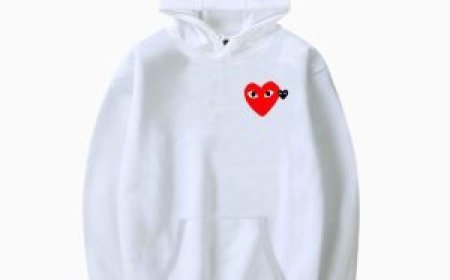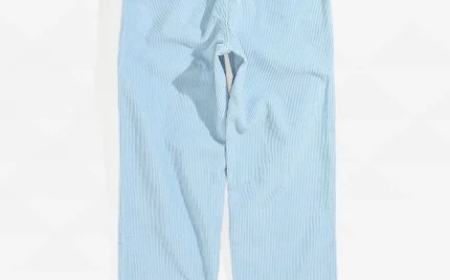Denim Tears: Stitching Truth into Streetwear
Denim Tears Canada Collection at Official Denim Tears Clothing Website. Enjoy Fast Shipping and Substantial Discounts! Up to 50% Off.

In an age where fashion is often reduced to a fleeting trend or a viral aesthetic, some brands stand out not just for what they create, but for why they create. One such force is Denim Tears, the brainchild of cultural historian and designer Tremaine Emory. More than just a fashion label, Denim Tears is a platform of cultural commentary, a wearable archive of Black history, and a raw exploration of identity. Through denim, cotton, denim tears and unapologetic storytelling, the brand confronts America's past and reframes the narrative of streetwear.
The Genesis of Denim Tears
Denim Tears officially launched in 2019, but its roots trace back much earlier in Tremaine Emorys career. Emory, who has long been a respected figure in fashion and creative circles, worked with the likes of Kanye West, Frank Ocean, and Virgil Abloh. Known for his thoughtful, intellectual approach to art and fashion, Emory sought a medium to tell a deeper storyone that wasn't being told by mainstream brands. That story began with cotton.
The first collection of Denim Tears was a powerful statement. Emory emblazoned cotton wreaths on Levis denim jackets and jeans, a visual metaphor referencing the historical exploitation of Black labor in the American South. This wasnt just design; it was protest, education, and remembrance stitched into the fabric of garments. The launch marked the 400th anniversary of the first enslaved Africans arriving in Jamestown, Virginia in 1619. Through Denim Tears, Emory was making it clear that fashion couldand shouldbe political.
Cotton: A Fabric of Pain and Power
At the heart of Denim Tears lies cottonnot just as a material, but as a symbol. Cotton is synonymous with slavery, colonialism, and economic exploitation. It fueled the American economy at the cost of Black lives, with millions of enslaved Africans forced to labor in cotton fields under brutal conditions. Emorys decision to center his brand around cotton is an act of reclamation. He forces the industry and consumers to confront the material's painful history, even as its worn today as a symbol of casual comfort.
But Emory doesnt stop at critique. His work also honors the resilience, creativity, and contributions of Black people throughout history. The cotton wreaths he uses aren't just symbols of sufferingthey are also symbols of survival, legacy, and cultural power. By placing these motifs on denima fabric often associated with rebellion and youth culturehe connects the past to the present in a visceral, visual way.
Streetwear as Storytelling
Denim Tears is part of a larger movement that redefines streetwear. While many brands use streetwear to sell hype and exclusivity, Emory uses it to tell the truth. In his hands, a hoodie becomes a thesis, a pair of jeans a historical document. His collections have explored everything from Pan-Africanism to the Civil Rights Movement, often referencing figures like James Baldwin, Marcus Garvey, and Angela Davis.
What sets Denim Tears apart is its commitment to depth. Every drop is accompanied by essays, interviews, and context that elevate the clothes into cultural commentary. Emory doesn't care if the pieces are cool in a traditional sense. He cares if they say something. And in doing so, Denim Tears challenges consumers to engagenot just buy.
Collaboration with Purpose
Denim Tears has collaborated with some of the biggest names in fashion and sportswear, including Levis, Converse, Champion, and Dior. Yet these partnerships never feel like commercial grabs. Instead, Emory uses them to expand his message and reach wider audiences.
Take the Levis collaboration, for example. By working with the brand whose name is practically synonymous with denim, Emory confronted America's legacy of slavery head-on. The juxtaposition of a mainstream American staple with cotton wreaths forced a reevaluation of both the past and the present.
Similarly, the Converse project paid tribute to the Harlem Renaissance and the African diaspora. The collection included sneakers with Afro-Caribbean floral patterns and Pan-African colorways. These werent just aesthetic choicesthey were lessons, meant to educate as much as to dress.
Fashion as Resistance
Denim Tears exists in stark contrast to the commodified nature of modern fashion. In a world of drop culture, fast fashion, and endless collabs, Emory reminds us that fashion can be a vehicle for resistance. He is part of a lineage that includes not just designers, but activists, poets, and thinkers.
His work echoes the Black Arts Movement, using creativity as a means of protest and empowerment. It also brings to mind the traditions of Afrofuturism, imagining new realities while reckoning with past trauma. Each piece of Denim Tears serves as a quiet rebellion against erasure and invisibility. It is fashion that demands memory.
The Role of the Designer as Historian
Tremaine Emory has often described himself not just as a designer, but as a cultural producer and historian. This positioning is critical to understanding Denim Tears. He does not see his role as merely producing wearable products. He sees himself as documenting and disseminating Black history through clothing, images, and dialogue.
In a 2020 interview, Emory said, Im not here to make you comfortable. Im here to make you think. This sentiment underscores every collection hes released. Whether hes referencing the Black Panther Party or the Middle Passage, his work insists that we do not look away. It demands reckoningand offers remembrance.
Impact and Legacy
In just a few years, Denim Tears has gone from a niche label to a cultural force. Celebrities like A$AP Rocky, Virgil Abloh, and Rihanna have worn the brand, and its pieces often sell out within hours. But the true impact of Denim Tears isnt measured in sales or celebrity endorsements. Its measured in conversation.
Emory has created a space where young peopleespecially Black youthcan see themselves, their ancestors, and their struggles reflected in what they wear. Denim Tears Tracksuit He has brought historical consciousness to streetwear, proving that education doesnt have to be confined to classrooms or textbooks. It can live in denim. It can walk down the street.
Looking Forward
As Denim Tears continues to grow, its clear that Emory is not done telling stories. His appointment as Creative Director of Supreme in 2022 signaled a broader acceptance of his vision within mainstream fashion, but he remains committed to the mission of Denim Tears. The brand is not about trends. Its about truth.
In a world that often forgets or rewrites history, Denim Tears stitches it back togetherpainfully, beautifully, defiantly. It reminds us that fashion is never just about what we wear. Its about who we are, where we come from, and what we choose to remember.
Through Denim Tears, Tremaine Emory has redefined what it means to design. He has shown that fabric can be a medium for memory, and that even the most familiar garmentsjeans, t-shirts, sneakerscan carry the weight of centuries. This isnt just fashion. Its a form of justice.

































